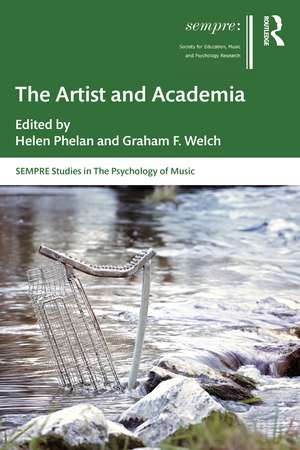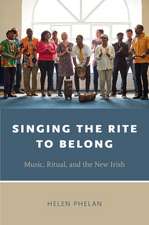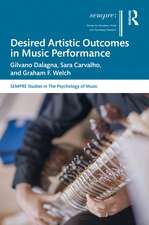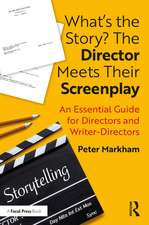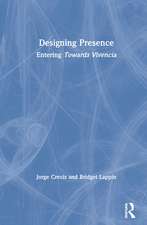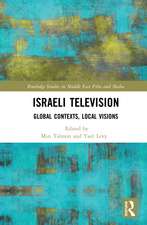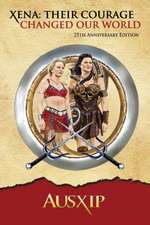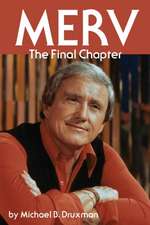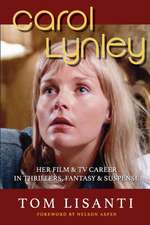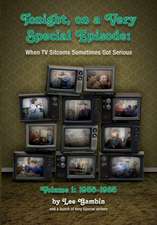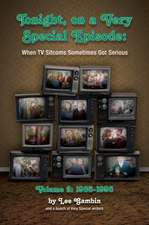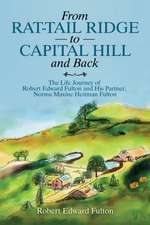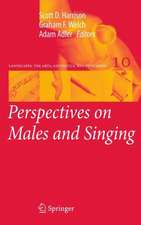The Artist and Academia: SEMPRE Studies in The Psychology of Music
Editat de Helen Phelan, Graham F. Welchen Limba Engleză Paperback – 30 mar 2022
| Toate formatele și edițiile | Preț | Express |
|---|---|---|
| Paperback (1) | 378.92 lei 6-8 săpt. | |
| Taylor & Francis – 30 mar 2022 | 378.92 lei 6-8 săpt. | |
| Hardback (1) | 765.75 lei 6-8 săpt. | |
| Taylor & Francis – 30 mar 2021 | 765.75 lei 6-8 săpt. |
Din seria SEMPRE Studies in The Psychology of Music
-
 Preț: 341.55 lei
Preț: 341.55 lei -
 Preț: 280.95 lei
Preț: 280.95 lei -
 Preț: 200.41 lei
Preț: 200.41 lei -
 Preț: 341.55 lei
Preț: 341.55 lei -
 Preț: 310.36 lei
Preț: 310.36 lei -
 Preț: 415.87 lei
Preț: 415.87 lei -
 Preț: 355.48 lei
Preț: 355.48 lei -
 Preț: 449.41 lei
Preț: 449.41 lei -
 Preț: 445.18 lei
Preț: 445.18 lei -
 Preț: 449.41 lei
Preț: 449.41 lei -
 Preț: 361.08 lei
Preț: 361.08 lei - 18%
 Preț: 1005.80 lei
Preț: 1005.80 lei - 12%
 Preț: 325.34 lei
Preț: 325.34 lei - 13%
 Preț: 324.86 lei
Preț: 324.86 lei - 26%
 Preț: 819.09 lei
Preț: 819.09 lei - 18%
 Preț: 846.89 lei
Preț: 846.89 lei -
 Preț: 449.41 lei
Preț: 449.41 lei - 18%
 Preț: 1001.51 lei
Preț: 1001.51 lei - 26%
 Preț: 764.20 lei
Preț: 764.20 lei -
 Preț: 488.29 lei
Preț: 488.29 lei - 26%
 Preț: 819.90 lei
Preț: 819.90 lei -
 Preț: 449.41 lei
Preț: 449.41 lei -
 Preț: 449.41 lei
Preț: 449.41 lei -
 Preț: 417.20 lei
Preț: 417.20 lei - 18%
 Preț: 1109.99 lei
Preț: 1109.99 lei - 18%
 Preț: 1055.66 lei
Preț: 1055.66 lei - 18%
 Preț: 1106.81 lei
Preț: 1106.81 lei -
 Preț: 411.42 lei
Preț: 411.42 lei - 18%
 Preț: 1112.41 lei
Preț: 1112.41 lei - 26%
 Preț: 849.37 lei
Preț: 849.37 lei - 18%
 Preț: 1000.27 lei
Preț: 1000.27 lei -
 Preț: 416.22 lei
Preț: 416.22 lei - 18%
 Preț: 1000.27 lei
Preț: 1000.27 lei
Preț: 378.92 lei
Nou
Puncte Express: 568
Preț estimativ în valută:
72.52€ • 74.81$ • 61.37£
72.52€ • 74.81$ • 61.37£
Carte tipărită la comandă
Livrare economică 05-19 martie
Preluare comenzi: 021 569.72.76
Specificații
ISBN-13: 9780367712105
ISBN-10: 0367712105
Pagini: 286
Ilustrații: 2 Line drawings, black and white; 35 Halftones, black and white; 37 Illustrations, black and white
Dimensiuni: 156 x 234 x 15 mm
Greutate: 0.2 kg
Ediția:1
Editura: Taylor & Francis
Colecția Routledge
Seria SEMPRE Studies in The Psychology of Music
Locul publicării:Oxford, United Kingdom
ISBN-10: 0367712105
Pagini: 286
Ilustrații: 2 Line drawings, black and white; 35 Halftones, black and white; 37 Illustrations, black and white
Dimensiuni: 156 x 234 x 15 mm
Greutate: 0.2 kg
Ediția:1
Editura: Taylor & Francis
Colecția Routledge
Seria SEMPRE Studies in The Psychology of Music
Locul publicării:Oxford, United Kingdom
Cuprins
Introduction
Essay 1: The Artist Turned Inside Out
Helen Phelan
Interlude 1: Outside In
Óscar Mascareñas
Part I: The Artist as Educator and Mediator in Academia
Essay Two: ‘… to know the place for the first time …’: Exploring and Researching through the Arts
Christopher Frayling
Essay Three: A Gallery of Hanging Thoughts: Framed Questions, Open Answers. Dance-artists in Conversation about the Process of Creating and Performing their Own Work.
Mary Nunan
Interlude 2: Stories
Joseph O’Connor
Essay Four: Landscapes of the In-Between: Artists Mediating CulturesAnya Peterson Royce
Interlude 3: An Island in the Middle of the Ocean
Alan Doyle
Interlude 4: The Land of Silence
Laura Murphy
Essay Five: The Artist-Teacher as Cultural Mediator
Marie McCarthy
Interlude 5: ‘Crossing the Threshold: a Music Teacher’s Journey into the Academy’
Jean Downey
Essay Six: Collaborative Knowledge Sharing for Mind and Body: Celebrating the Role of Arts in Health
Orfhlaith Ní Bhriain, Tríona McCaffrey, Amanda M. Clifford, Joanne Shanahan, Olive Beecher, Hilary Moss.
Part II: The Artist as Educator and Subversive in Academia
Essay Seven: The Subversive Potential of Praxis and Political Emotions in Arts Academies
David Elliott and Marissa Silverman
Interlude 6: The Well-Spring Deep Inside
Dana Delany
Essay Eight: Protest, Subversion and Critical Citizenship: Reflections on an Irish Singer-Songwriter
Aileen Dillane
Interlude 7: A Cello Can Be Stronger than a Machine Gun
Nigel Osborne
Essay Nine: Contesting and Negotiating Hegemonic Discourses: Constructing and Developing a Masters Programme in Irish Traditional Dance Performance Within a University Context Catherine Foley
Part III: Case study examples of the lived experienced of the Artist in Academia from the Irish World Academy
Essay Ten: Cultural Redress and the Growth of Love: A Guided Autoethnography
Mícheál Ó Súilleabháin
Interlude 8: Singing Out, Singing Up
Kathleen Turner
Interlude 9: The Academy as a Space of Musical Fosterage
Tommy Hayes
Interlude 10: Dancing as a Citizen of the World
RAS Michael Courtney
Interlude 11: The Academy as Transformation
Colin Dunne
Conclusion
Essay Eleven: Why the arts and artists are important
Essay 1: The Artist Turned Inside Out
Helen Phelan
Interlude 1: Outside In
Óscar Mascareñas
Part I: The Artist as Educator and Mediator in Academia
Essay Two: ‘… to know the place for the first time …’: Exploring and Researching through the Arts
Christopher Frayling
Essay Three: A Gallery of Hanging Thoughts: Framed Questions, Open Answers. Dance-artists in Conversation about the Process of Creating and Performing their Own Work.
Mary Nunan
Interlude 2: Stories
Joseph O’Connor
Essay Four: Landscapes of the In-Between: Artists Mediating CulturesAnya Peterson Royce
Interlude 3: An Island in the Middle of the Ocean
Alan Doyle
Interlude 4: The Land of Silence
Laura Murphy
Essay Five: The Artist-Teacher as Cultural Mediator
Marie McCarthy
Interlude 5: ‘Crossing the Threshold: a Music Teacher’s Journey into the Academy’
Jean Downey
Essay Six: Collaborative Knowledge Sharing for Mind and Body: Celebrating the Role of Arts in Health
Orfhlaith Ní Bhriain, Tríona McCaffrey, Amanda M. Clifford, Joanne Shanahan, Olive Beecher, Hilary Moss.
Part II: The Artist as Educator and Subversive in Academia
Essay Seven: The Subversive Potential of Praxis and Political Emotions in Arts Academies
David Elliott and Marissa Silverman
Interlude 6: The Well-Spring Deep Inside
Dana Delany
Essay Eight: Protest, Subversion and Critical Citizenship: Reflections on an Irish Singer-Songwriter
Aileen Dillane
Interlude 7: A Cello Can Be Stronger than a Machine Gun
Nigel Osborne
Essay Nine: Contesting and Negotiating Hegemonic Discourses: Constructing and Developing a Masters Programme in Irish Traditional Dance Performance Within a University Context Catherine Foley
Part III: Case study examples of the lived experienced of the Artist in Academia from the Irish World Academy
Essay Ten: Cultural Redress and the Growth of Love: A Guided Autoethnography
Mícheál Ó Súilleabháin
Interlude 8: Singing Out, Singing Up
Kathleen Turner
Interlude 9: The Academy as a Space of Musical Fosterage
Tommy Hayes
Interlude 10: Dancing as a Citizen of the World
RAS Michael Courtney
Interlude 11: The Academy as Transformation
Colin Dunne
Conclusion
Essay Eleven: Why the arts and artists are important
Notă biografică
Helen Phelan is Professor of Arts Practice at the Irish World Academy of Music and Dance, University of Limerick, Ireland. She is an Irish Research Council recipient for her work on singing and migration. Her book, Singing the Rite to Belong: Music, Ritual and the New Irish, was published by Oxford University Press in 2017. She is co-founder of the female vocal ensemble Cantoral, specializing in Irish medieval chant; founder of the Singing and Social Inclusion research group; and IMBAS, a support network for artistic research in Ireland. Her most recent Health Research Institute funded project explores the use of arts-based methods in migrant health research.
Graham F. Welch has held the Established Chair of Music Education at UCL Institute of Education (formerly University of London) since 2001. He is a Past President of the International Society for Music Education (ISME) (2008-2014) and elected Chair of the Society for Education, Music and Psychology Research (SEMPRE). He holds Visiting Professorships at universities in the United Kingdom and overseas, and is a former member of the UK Arts and Humanities Research Council (AHRC) Review College for Music (2007-2015).
Graham F. Welch has held the Established Chair of Music Education at UCL Institute of Education (formerly University of London) since 2001. He is a Past President of the International Society for Music Education (ISME) (2008-2014) and elected Chair of the Society for Education, Music and Psychology Research (SEMPRE). He holds Visiting Professorships at universities in the United Kingdom and overseas, and is a former member of the UK Arts and Humanities Research Council (AHRC) Review College for Music (2007-2015).
Descriere
This edited collection brings together leading artists and scholars (as well as artist-scholars) to offer a variety of philosophical, educational, experiential, reflexive and imaginative perspectives on the artist and academia.
